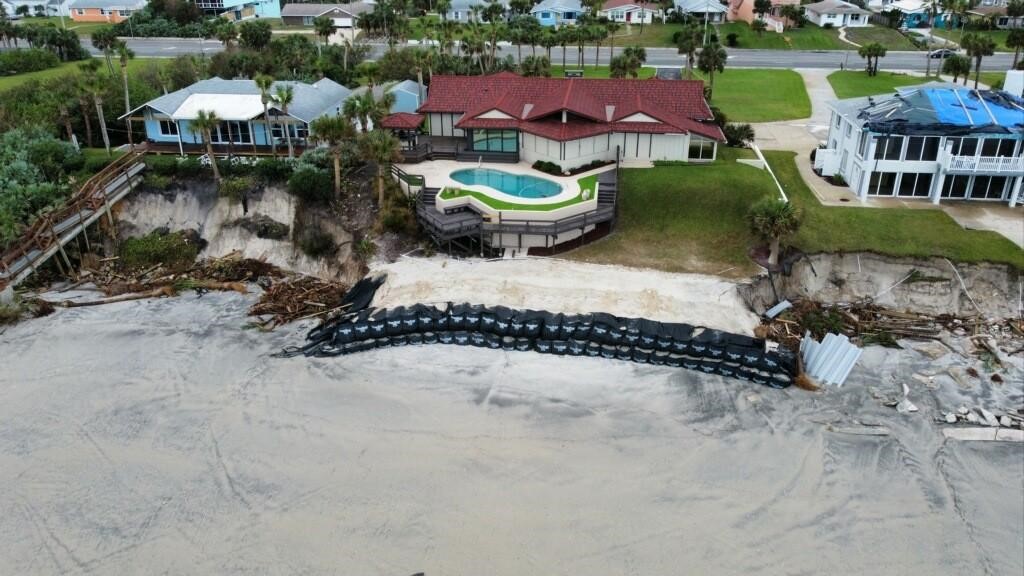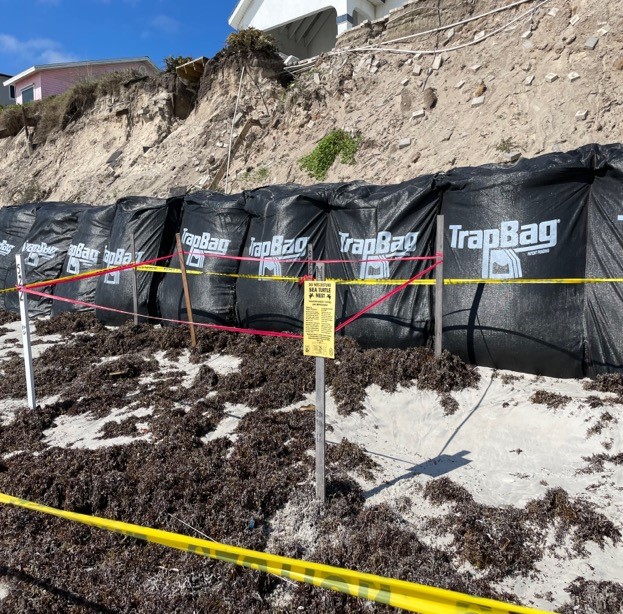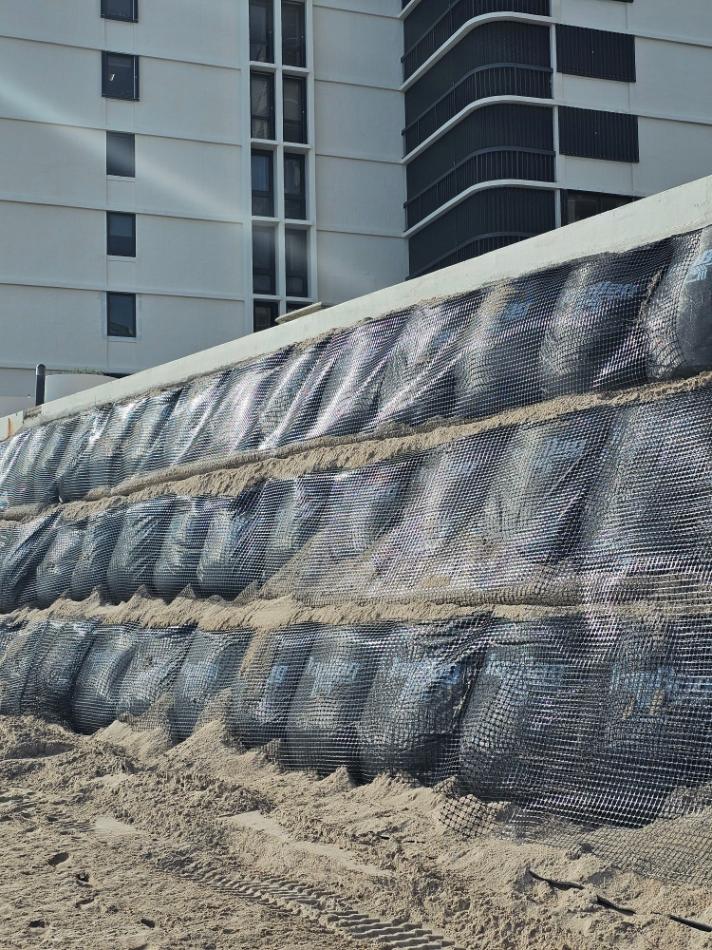Project Specifications
- Product used: 4ft TrapBag® barriers
- Installation configurations: Back-to-back row system for lower-lying areas, 3-stack configuration (two back-to-back rows with a third row stacked on top) for up to 8 feet of protection
- Material: UV-resistant, high-strength geotextile
- Fill material: Locally sourced sand
- Reinforcement: Select areas reinforced with geogrid or tie-back systems for increased storm resilience
Initial Solution
Following the hurricanes, crews deployed over 80,000 linear feet of TrapBag barriers across Daytona Beach and other vulnerable areas along the Florida coast, ultimately:
- Mitigating shoreline erosion: They stabilized shifting sands and prevented further land loss.
- Protecting infrastructure: The barriers shield roads, properties, and utilities from storm surge and flooding.
- Supporting beach renourishment: They contained 1.2 million cubic yards of newly added sand to restore lost beaches.
By acting as a first line of defense, TrapBags provided immediate stability to make recovery easier.
Unintended Longevity
Originally designed as a temporary post-storm stabilization measure, the TrapBag system exceeded expectations and remained effective for over a year. The barriers endured repeated storm surges, high winds, and wave actions to hold back erosion and resist deterioration.
Volusia County officials recognized TrapBag as a long-term defense mechanism and opted to expand and reinforce the existing system rather than replace it.
Project Expansions and Reinforcements
Recognizing the long-term benefits of TrapBag systems, Volusia County continued reinforcing its coastal defenses through 2023 and 2024. The progress of the project included:
- Ongoing reinforcements (2023): We provided additional TrapBags to protect new areas affected by continuous erosion.
- Proactive installations (2024): Ahead of the 2024 hurricane season, crews deployed more barriers to fortify vulnerable shorelines and protect against potential storm impacts.
- Environmental considerations: Officials adjusted TrapBag placements in coordination with wildlife agencies to preserve sea turtle nesting habitats and other sensitive areas.
Performance During Major Storms
TrapBag’s resilience was put to the test through multiple extreme weather events, including:
- Hurricanes Ian & Nicole (2022): Despite high wave energy and storm surge, the barriers minimized damage to infrastructure and beachfront properties.
- Hurricanes Helene & Milton (2024): Newly installed TrapBags provided added protection, prevented erosion, and cut back on flood damage.
With the shoreline stabilized, local governments and homeowners were able to expedite reconstruction efforts and restore local properties and public access.
Key Outcomes
- Immediate impact: TrapBag barriers stabilized the shoreline, preventing additional storm-related erosion.
- Cost-efficiency: The system reduced the need for costly emergency repairs.
- Scalability: Additional TrapBags were quickly installed to address newly eroded areas and provide proactive storm protection.
- Community & government endorsement: County officials, property owners, and environmental agencies recognized TrapBag as an instrumental tool for protecting Volusia County’s coastline.
Conclusion
The Volusia County and Daytona Beach TrapBag project exemplifies how rapid deployment, adaptability, and proactive planning can effectively safeguard coastal communities from storm surge and erosion.
By integrating TrapBag technology with beach renourishment efforts, Volusia County has set a precedent for sustainable, long-term coastal resilience to protect residents, infrastructure, and wildlife habitats for years to come.
More coverage from WESH 2 News:
Installation Highlights
- 4ft TrapBag® barriers—Back-to-back row system for lower-lying areas, 3-stack configuration (two back-to-back rows with a third row stacked on top) for up to 8 feet of protection.
- UV-resistant, high-strength geotextile. Select areas reinforced with geogrid or tie-back systems for increased storm resilience.
- Locally sourced beach-compatible sand






